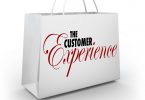By Betty Moore, Founder, Ignition Point
There is rarely a more critical time to get your marketing strategy right than during your company’s startup phase. During this time, money will likely be tight, and the pressure will be intense to generate sales while building credibility and confidence among your target audiences. While the usual marketing plan elements still need to be fleshed out, the birth of your brand deserves special attention to help ensure early success.
This is probably the most overlooked and misunderstood part of the launch of your company. Your brand needs to be engineered to appeal to your primary target audience. Decisions related to positioning, value proposition, and unique selling proposition are integral to the branding effort.
Engineering your brand
Many business people think that your logo is synonymous with your brand. In reality, the logo is a very small portion of the brand effort during startup phases. Later, once your brand has been repeatedly communicated, in multiple ways, with frequency and consistency, the logo can begin to embody the overall brand. For example, Nike’s logo (a.k.a. the “swish”), now brings forth feelings of positive energy when viewed, even if it is independent from the wordmark. It is highly recognizable, as are
other famous brands, such as MacDonald’s, Coke, and IBM. During startup phases, however, the “swish” would have meant little to viewers, especially when separated from its name. In Nike’s case, their brand was correctly engineered according to the tenets of the science of branding.
The science of branding
Branding begins with an understanding of four key things: your primary target customer; your competitors; your product/service mix; and your advantage.
To build the most effective brand, start with your primary target customer. Be brave: don’t target all your prospective customers at once — instead, focus on your top prospects only. Since this is the largest audience that will make decisions in favour of your company, you’ll want the brand to appeal to them, and offer the traits that will command preference. For this, it is critical to think of your customer as a single person – age, sex, education, likes, dislikes, worries, wants, needs, personality. Think of this target’s personal and professional concerns. Your overall brand needs to be designed for maximum appeal: for example, if your target is older and more conservative, it is unwise to build an “extreme” or “hip-hop” brand character. If your audience is boys aged 9-17, as it is with Pizza Pockets, your brand will have the most appeal if it’s gross and funny.
Of course you’ll want to develop a brand that is distinct and different from your competitors. Many people mistakenly think that emulating a more dominant brand will bring you part of their business. In reality, it is more likely that your meager marketing budget will go to waste when your ads lure them to the dominant product instead. The mantra here is “Zig while others Zag”. Repeat it and apply it until you’re sure that you will stand apart from the competition — especially those which
dominate the market, or from which you will steal market share.
Now that you know your brand will appeal to your primary customer, and stand apart from the competition, you’ll need to develop a tagline that tells people what you do. During startup phases, your tagline should say what you do, with an adjective that helps convey your main advantage. Later, once the brand is established, you’ll be able to migrate your tagline to qualify your character instead. For example, in the case of Nike, the tagline “Just do it.” would have meant little during startup years. Instead, the tagline would likely have read something like “Sportswear for kickin’ hang time”, to position it within the basketball arena where it made its early wins.
Your advantage is the last piece of the puzzle needed to characterize your brand. You can create the brand character alone, just as Microsoft did. Or, you can borrow character traits that express your character and advantage, such as Nike. Their sponsorship of Michael Jordan quickly imparted energy, strength, trust, and success to the brand. If your advantage is specialization in a specific vertical segment, such as basketball, build a brand that is steeped in its most successful and appealing parts: energy, strength, spirit, competition, youth, and — of course — the win. If your advantage is ideas, make sure your brand is not dull and static. If you are the lowest price, make sure to avoid excesses, and turn “low price” into “smart business”. If your products are more robust, build a no-nonsense, industrial-strength character into the brand.
Your brand is as complex as you are
Although these four steps are a vast oversimplification of the science of branding, they make it clear that a logo is only a small part of your branding effort. Your brand is everything that helps someone conjure up a positive or negative image of you. It also conveys your beliefs, and what you stand for. Your brand is your logo, tagline, messages, attitudes, comments, behaviors, office space, and appearance. It is reflected by your executives, sales team, and staff. It is communicated through your stationery, ads, brochures, website, trade show booths, quality commitments, and choice of words. It is seen in what you promise, and proven by what you deliver. It
makes itself evident in how you treat your employees, suppliers, and customers. It is ultimately what people feel and say about you — not what you claim about
yourself.
Convey your value proposition
Are you cheaper than your competitors? Are you more expensive but worth it? Are you about the same cost, but a heck of a lot cooler? Are you the environmental choice? Make sure your brand clearly communicates your value proposition — that is your net offer to customers. If your brand misses this one point, you’ll suffer weaker sales.
Poor credibility a common mistake
After lack of deliberacy and intent in the branding effort, the most common mistake is to forget that any new company must create trust and generate credibility. Poor quality corporate identities will harm your company’s efforts — especially when trying to make inroads into established territory, against entrenched competitors.
Seek professional help
Your brand can be a powerful lever that helps your company win trust and business. Or, it can be an impotent mark on your collateral. With professional help, you can take early advantage during your critical startup period. However, don’t expect your professional design team to take their best guess — you must actively participate in defining your effective brand.
My advice?
The wise startup will take control of their brand right from the outset. It is a worthwhile investment, optimizing key advantages early on. It should be taken into consideration in the business plan, and implemented with professional help. Things are tough enough during startup phases — why make the fight harder?
Betty Moore can be reached via eMail at [email protected]
or via Ignition Point’s website at www.ignitionpt.com








